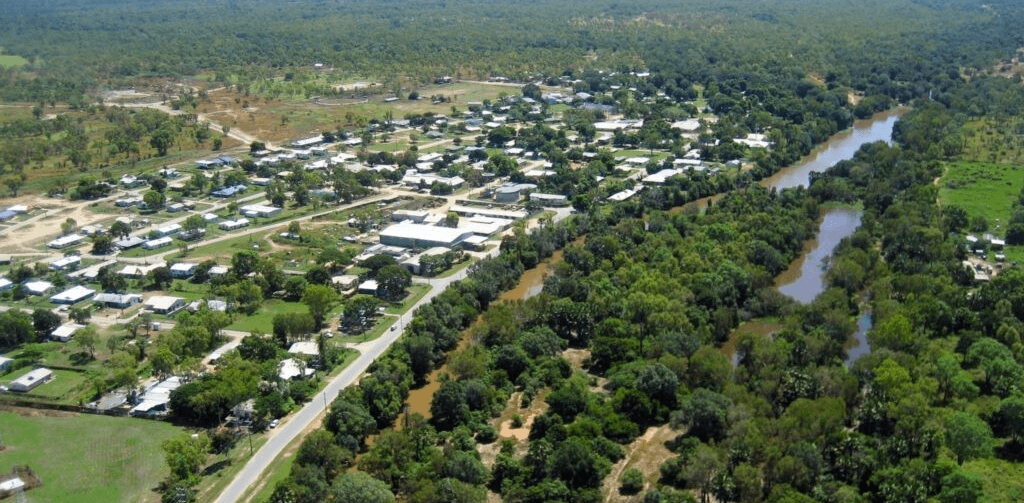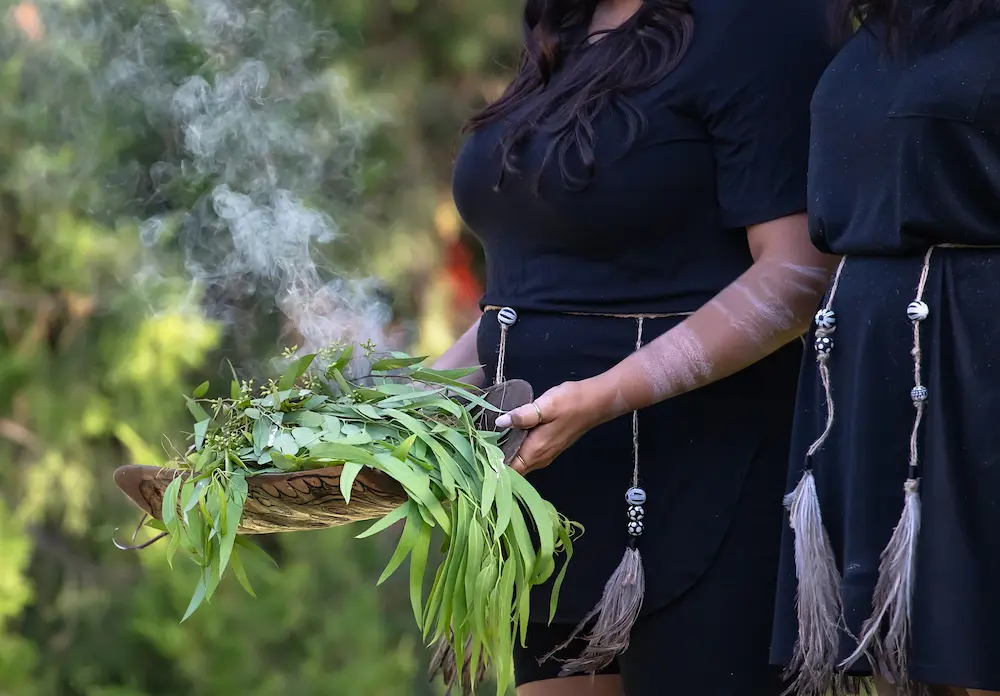IWD2025: Breaking Barriers, Building Solutions
First Nations women have always been economic leaders, providing for their families and communities, yet today they remain significantly underrepresented in key financial and leadership roles in almost all sectors. Despite making up 3.8% of the Australian population1 , First Nations women receive less than 1% of venture capital funding for startups2 and hold virtually no executive roles in ASX 300 companies3 .
Yet Aboriginal and Torres Strait Islander women continue to drive economic progress, shaping finance, entrepreneurship, and policymaking while managing their communities’ social and economic wealth. With First Nation women-owned businesses growing faster than the national average, their contributions to economic development are undeniable4 .
As we mark International Women’s Day 2025, First Nations Economics is proud to stand behind this year’s theme, #AccelerateAction—because without urgent intervention, economic equality for First Nations women will remain generations away. We can’t afford to wait that long.

Economic empowerment is not just about jobs or capital – it is about self-determination. For Aboriginal and Torres Strait Islander women, true empowerment means having the freedom and resources to build financial systems that align with their cultural values, community priorities, and long-term sustainability. That builds independence rather than interdependence on colonial and patriarchal power systems.
When First Nations women are truly seen, heard, and supported in economic leadership, they don’t just participate—they transform industries, drive innovation, and build stronger, more sustainable communities. Their leadership is the bedrock for creating intergenerational wealth, benefiting not only First Nations peoples but the entire Australian economy.
Yet, systemic barriers continue to hold them back. Limited access to capital, exclusion from leadership roles, and a lack of culturally responsive financial education stifle opportunities for many First Nations women, preventing them from reaching their full potential.
As highlighted in the Wiyi Yani U Thangani Report5, First Nations women are clear:
“It is only through a fundamental shift in the way Aboriginal and Torres Strait Islander people are represented, respected, and empowered in this country that we will see the long-term, systemic change that is needed to close the gap in outcomes for our people.”
Key Barriers Facing First Nations Women
Geographical Location
Location plays a critical role in deepening economic disparity. Women in regional and remote communities continue to grapple with limited access to essential banking services, unstable communication infrastructure, and far fewer economic opportunities than their metropolitan counterparts. Additional barriers—such as land ownership restrictions and Native Title complexities—further limit their ability to achieve financial independence and build intergenerational wealth for their families and communities.

Limited Access to Capital
Many First Nations women entrepreneurs struggle to secure funding due to restrictive banking structures, unconscious bias, and a lack of flexible financing models. Traditional lending systems often do not accommodate First Nations business models prioritising community wealth and long-term sustainability over short-term profits. Many First Nations businesses cannot scale or achieve financial security without appropriate funding options, and yet there continues to be a lack of financial products specifically tailored to meet the unique needs of First Nations women.
- Only 0.7% of all venture capital funding in Australia went to startups founded solely by women in 2022—with the portion going to First Nations women likely far lower.6
- Nearly 40% of First Nations businesswomen report difficulty in securing business loans due to lack of collateral and institutional bias.7
Underrepresentation in Economic Decision-Making
First Nations women are rarely seen in senior finance, government, and corporate leadership roles in Australia. When economic strategies are developed without input, policies often fail to reflect Aboriginal and Torres Strait Islander values of sustainability, shared wealth, and community-led prosperity. Without representation, the economic systems that shape their lives and communities remain out of their control.
- As of 2023, there were only four First Nations directors (men and women combined) in ASX 300 board positions, representing less than 0.6% of all board seats.8
- No First Nation women have held a CEO position in an ASX 200 company.9
- The employment rate for Aboriginal and Torres Strait Islander women is nearly 20 percentage points lower than that of non-Indigenous women.10
Lack of Culturally Responsive Financial Education
Financial education programs often fail to integrate Indigenous knowledge systems of wealth management, investment, and community-led economic governance. Without culturally relevant financial literacy and enterprise education, First Nations women are disadvantaged when navigating mainstream financial systems and securing economic opportunities.
- Only 31% of First Australians feel confident managing money, compared to 50% of the general population.11
- Nearly 49% of First Nations Australians experience severe financial stress, compared to 11% of the general population.12

Addressing these barriers requires a collective commitment from businesses, financial institutions, government agencies, and the wider community. If we are serious about accelerating action, we must move from acknowledgment to policy implementation.
1. Invest in First Nations Women-Led Enterprises
Governments, private investors, and corporate entities must prioritise equitable access to capital by creating culturally responsive funding models. Traditional lending structures need to be reformed to better accommodate First Nation business models, which focus on community prosperity and long-term sustainability. This may involve lenders shifting toward a culturally responsive funding mode that offer alternative credit assessments, flexible repayment terms, and profit-sharing models that align with First Nation economic priorities.
2. Increase Representation in Economic Decision-Making
First Nations women must be included at all levels of leadership in finance, government, and business. This requires active recruitment, mentorship, and career progression pathways to ensure Aboriginal and Torres Strait Islander women enter these spaces and thrive within them. Economic policies and financial regulations must be shaped by First Nations voices, not just in consultation but through true leadership roles.
3. Implement Culturally Responsive Financial Education
Economic literacy programs must integrate First Nation knowledge systems, ensuring First Nations women have the tools, confidence, and networks to manage and grow wealth on their own terms. These programs should be developed in partnership with First Nation communities, ensuring they reflect real needs and cultural values.
4. Strengthen First Nation-Led Economic Policy
Government policies must align with First Nations’ economic priorities and be developed in partnership with Aboriginal and Torres Strait Islander women in leadership While policies including the Indigenous Procurement Policy (IPP) have generated $9.5 billion in contracts for First Nations businesses in 2015, there remains a lack of tailored support for First Nation women-led enterprises13. Procurement strategies, investment incentives, and economic frameworks must be designed to genuinely support First Nations’ businesses and financial empowerment. Governments must move beyond rhetoric and commit to policy action that drives long-term economic inclusion.
First Nation women have always been economic leaders. Their contributions have shaped trade, governance, and wealth distribution for generations. The question is not whether they are capable – it is whether we will remove the barriers and provide them with the opportunity they deserve. At the current rate of progress, gender parity in economic leadership will take 135 years to achieve.14
This International Women’s Day, we need to move beyond mere recognition and take bold, decisive action. Equality cannot wait—it demands real investment, systemic change, and a firm commitment. A genuinely equitable and inclusive future is one in which First Nations women are not just participants but also leaders—actively shaping the financial and economic systems that impact their communities and the nation.

First Nations Economics is committed to empowering First Nations women in business, finance, and economic leadership by advocating for structural reforms that remove financial barriers and promote economic self-determination. Through research, policy engagement, and capacity-building programs, FNE works to ensure culturally responsive funding models, increased access to capital, and stronger representation in economic decision-making spaces. By partnering with government, corporate entities, and First Nations-led enterprises, FNE is driving initiatives that challenge systemic biases in finance and economic development, enhance First Nation community sustainability, and create pathways for intergenerational wealth. At the core of FNE’s work is the belief that First Nations women should not only participate in the economy but lead it – on their own terms.
References:
- Australian Bureau of Statistics (ABS) (2022). Australia: Aboriginal and Torres Strait Islander population summary. Available at: https://www.abs.gov.au/articles/australia-aboriginal-thand-torres-strait-islander-population-summary (Accessed: 4 March 2025). ↩︎
- Australian Investment Council (2022) Women Founders and Venture Capital Funding in Australia, Australian Investment Council. Available at: https://www.aic.co (Accessed: 4 March 2025). ↩︎
- Australian Institute of Company Directors (AICD) (2023) Board Diversity Index: Indigenous Representation on ASX Boards, AICD. Available at: https://www.aicd.com.au (Accessed: 4 March 2025). ↩︎
- Indigenous Business Australia (IBA) (2021) Indigenous Business Sector Snapshot 2021, Indigenous Business Australia. Available at: https://www.iba.gov.au (Accessed: 4 March 2025). ↩︎
- Australian Human Rights Commission, 2020 Wiyi Yani U Thangani (Women’s Voices) – Securing Our Rights, Securing Our Future Report, available at: https://humanrights.gov.au/our-work/aboriginal-and-torres-strait-islander-social-justice/publications/wiyi-yani-u-thangani, accessed 4 March 2025 ↩︎
- Australian Investment Council (2022) Women Founders and Venture Capital Funding in Australia, Australian Investment Council. Available at: https://www.aic.co (Accessed: 4 March 2025). ↩︎
- NSW Treasury (2023) First Nations Women’s Economic Participation Review, NSW Government. Available at: https://www.treasury.nsw.gov.au (Accessed: 4 March 2025). ↩︎
- Australian Institute of Company Directors (AICD) (2023) Board Diversity Index: Indigenous Representation on ASX Boards, AICD. Available at: https://www.aicd.com.au (Accessed: 4 March 2025). ↩︎
- Chief Executive Women (CEW) (2023) Senior Executive Census 2023: Women in Leadership, CEW Australia. Available at: https://www.cew.org.au (Accessed: 4 March 2025). ↩︎
- Australian Bureau of Statistics (ABS) (2021) Labour Force Participation and Indigenous Employment, Australian Government. Available at: https://www.abs.gov.au (Accessed: 4 March 2025). ↩︎
- Organisation for Economic Co-operation and Development (OECD) (2015) Financial Literacy of Indigenous Australians: Comparative Study, OECD. Available at: https://www.oecd.org (Accessed: 4 March 2025). ↩︎
- Centre for Social Impact (2021) Financial Stress Among Indigenous Australians: A National Study, Centre for Social Impact, University of New South Wales. Available at: https://www.csi.edu.au (Accessed: 4 March 2025). ↩︎
- Indigenous Business Australia (IBA) (2024) Aboriginal and Torres Strait Islander Pathways Business Report, Indigenous Business Australia. Available at https://www.iba.gov.au (Accessed: 4 March 2025) ↩︎
- World Economic Forum (WEF) (2023) Global Gender Gap Report 2023: Economic Leadership & Parity, WEF. Available at: https://www.weforum.org (Accessed: 4 March 2025). ↩︎
